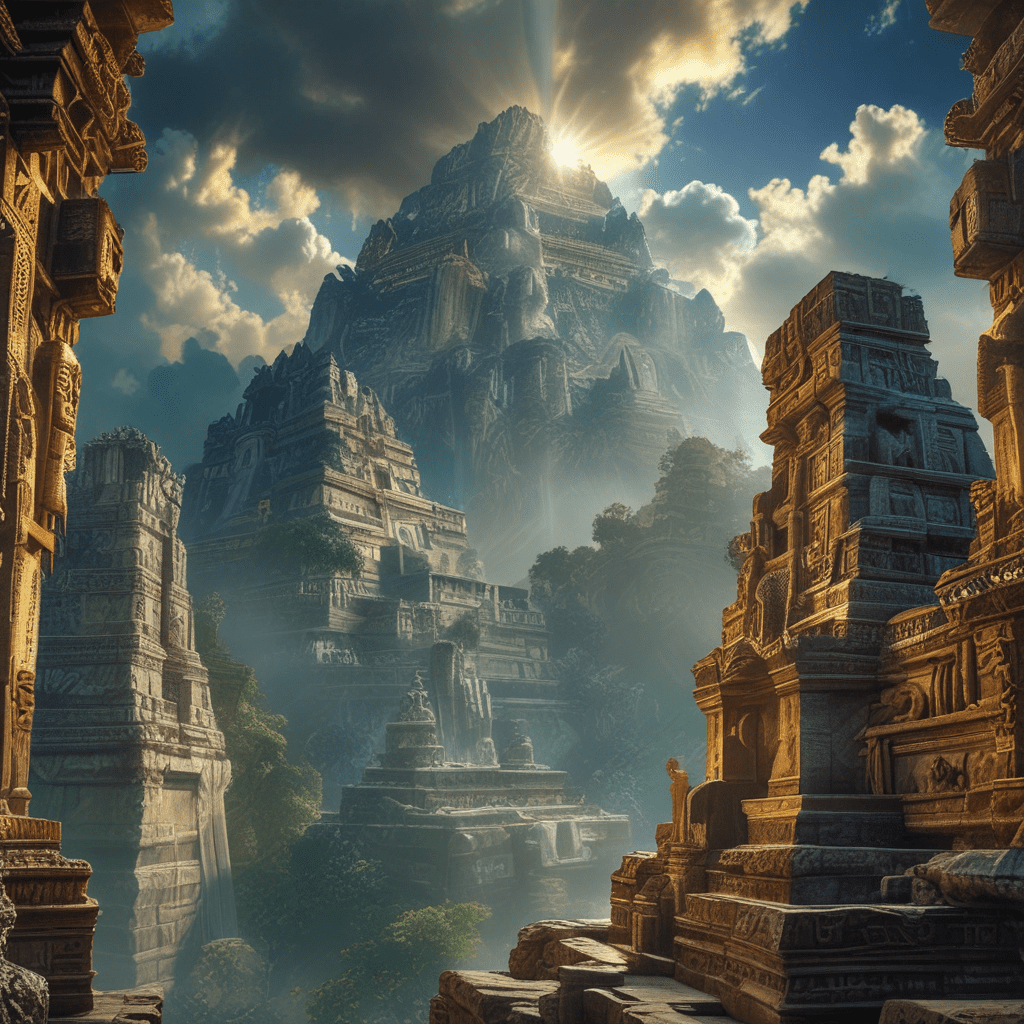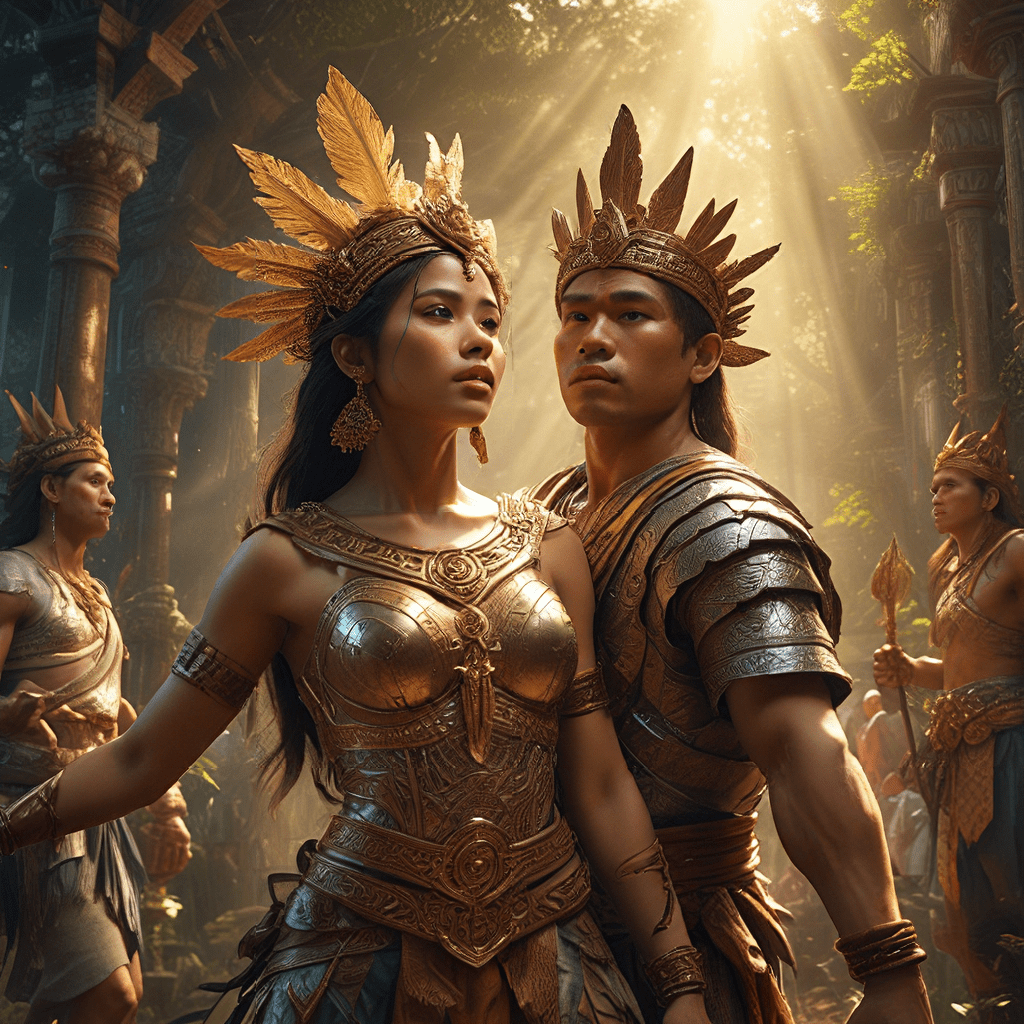The Myth of the Sacred Mountain: Axis Mundi in Mayan Beliefs
1. Introduction
Across various cultures and civilizations, the concept of the Axis Mundi has held profound significance. This central pillar connects the terrestrial and celestial realms, bridging the gap between the earthly world and the heavens. For the ancient Maya, the sacred mountains served as the embodiment of this cosmic axis, playing a pivotal role in their mythology, cosmology, and daily lives.
Embedded in the lush rainforests and towering volcanoes of Mesoamerica, the Mayan civilization flourished for centuries, leaving behind a legacy of architectural marvels and sophisticated belief systems. Their unique cosmology, defined by a three-layered universe, intertwined with the sacred mountains, establishing them as the linchpins of their spiritual world.
The Mayans believed in a multi-layered universe composed of the underworld (Xibalba), the earthly realm (Yaxche), and the heavens (Kab). Harmony between these realms was paramount, and the sacred mountains served as the crucial conduits of this cosmic balance.
2. Mayan Cosmology: Layers of Existence
The Mayan cosmos was envisioned as a three-layered structure, each representing a distinct and interconnected realm:
- Xibalba: The underworld, a shadowy and dangerous domain inhabited by malevolent deities, was associated with death, darkness, and the ancestors.
- Yaxche: The earthly realm, where humans resided, was characterized by fertility, life, and daily existence.
- Kab: The heavens, a celestial paradise inhabited by benevolent deities, was associated with light, rain, and abundance.
The Mayans believed that these three realms were interconnected, and maintaining balance between them was essential for cosmic harmony. The sacred mountains, rising from the earth, served as the physical manifestations of this connection, bridges linking the earthly plane with the celestial and the underworld.
3. Sacred Mountains in Mayan Mythology
Throughout the Maya region, numerous mountains held deep symbolic and religious significance. Among these, Witznab, Hun Nal Ye, and Wakah Chan stand out as prominent sacred mountains:
- Witznab: Located near the ancient city of El Mirador, Witznab was believed to be the entrance to the underworld, where the Maize God resided.
- Hun Nal Ye: This mountain, situated near Tikal, was associated with the sun and the rebirth of the Hero Twins, mythical figures representing the cyclical nature of life and death.
- Wakah Chan: Located in the Quiché highlands, Wakah Chan was associated with the rain god Chaac and was believed to be the source of life-giving water.
These sacred mountains were often linked to specific deities or celestial bodies, reflecting their multifaceted roles in Mayan mythology and cosmology. Their towering presence and symbolic associations solidified their status as crucial elements in the Mayan worldview.
4. The Axis Mundi and the Sacred Mountains
The concept of the Axis Mundi, often depicted as a central pillar or world tree, represents the connection between the different realms. In the Mayan context, the sacred mountains embodied this axis, connecting the underworld, the earth, and the heavens.
Their verticality symbolized the passage between these realms, while their physical presence served as focal points for rituals and ceremonies aimed at maintaining cosmic balance. Through offerings, prayers, and pilgrimages to these mountains, the Mayans sought to interact with the divine and influence the well-being of their communities.
6. Theories and Interpretations
Scholars have proposed various interpretations and theories concerning the meaning and symbolism of the Mayan sacred mountains. One prominent perspective emphasizes their connection to the Axis Mundi, suggesting that they served as physical manifestations of the cosmic axis that connected the three realms of the Mayan universe.
Another interpretation relates the mountains to specific deities or celestial bodies, highlighting their role as intermediaries between the earthly and divine realms. This perspective suggests that the mountains served as conduits for communication with the gods and ancestors, offering a means of accessing their power and blessings.
Additionally, some researchers argue that the mountains played a symbolic role in shaping Mayan cultural identity and traditions. Their towering presence and association with the gods and the cosmos reinforced the importance of maintaining harmony and balance within the community.
7. Archaeological Evidence and its Significance
Archaeological evidence provides valuable insights into the connection between the Mayan sacred mountains and the Axis Mundi concept. Excavations at various sites have revealed artifacts and structures that support the theory of the mountains' role as cosmic gateways.
For instance, at the El Mirador complex, archaeologists discovered a sunken courtyard associated with Witznab, the entrance to the underworld. This courtyard, aligned with astronomical markers, suggests that the Mayans used the mountain as a means of observing celestial events and connecting with the cosmos.
Similarly, at Tikal, the monumental architecture and astronomical alignments of the pyramid temples associated with Hun Nal Ye indicate the mountain's importance as a symbolic link between the heavens and the earth.
These archaeological findings reinforce the notion that the Mayan sacred mountains were not merely physical structures but also held deep symbolic and religious significance, serving as physical manifestations of the Axis Mundi and facilitating communication between the earthly and celestial realms.
8. Cultural Significance and Symbolism
Beyond their religious and cosmological significance, the Mayan sacred mountains held profound cultural importance for the surrounding communities. These mountains were often revered as the ancestral homes of their lineages, providing a sense of connection to their history and heritage.
The mountains also served as a source of life-giving water, with springs and rivers originating from their slopes. This vital resource sustained agricultural practices and supported the livelihoods of the communities.
Moreover, the mountains played a central role in shaping Mayan cultural traditions and ceremonies. Rituals and pilgrimages to these sacred sites reinforced communal bonds, strengthened religious beliefs, and reaffirmed the importance of maintaining balance with the natural world.
9. Conclusion
The Mayan sacred mountains stand as enduring testaments to the sophisticated cosmology and profound spiritual beliefs of the ancient Maya civilization. These mountains, embodying the concept of the Axis Mundi, served as physical manifestations of the connection between the earthly realm, the underworld, and the heavens.
Through their association with deities, celestial bodies, and vital resources, the mountains played a multifaceted role in Mayan society, shaping their cultural identity, religious practices, and relationship with the natural world. The legacy of the Mayan sacred mountains continues to inspire awe and wonder, offering insights into the complex and fascinating world of Mayan beliefs and cosmology.
10. Frequently Asked Questions
What are the names of some other significant Mayan sacred mountains?
Besides Witznab, Hun Nal Ye, and Wakah Chan, other notable Mayan sacred mountains include:
- Ek Chuah: Located near Izamal, Ek Chuah was associated with the god of merchants and cacao.
- El Baúl: Situated near Tikal, El Baúl was associated with the underworld and the Maize God.
- Tajumulco: The highest mountain in Central America, Tajumulco was considered sacred by the Quiché Maya.
What are some of the rituals and ceremonies that took place at the sacred mountains?
The Mayans performed various rituals and ceremonies at the sacred mountains, including:
- Pilgrimages: Devotees would undertake journeys to the mountains to pay homage to the deities and ancestors.
- Offerings: Incense, food, and other offerings were presented to the gods to seek their favor and blessings.
- Bloodletting: Ritual bloodletting was practiced to appease the gods and ensure cosmic balance.
- Ball games: Ritual ball games were played at the mountains, symbolizing the struggle between life and death.
How did the Spanish conquest affect the sacred mountains?
The Spanish conquest of the Maya region in the 16th century had a significant impact on the sacred mountains. Many of the mountains were desecrated or destroyed, and traditional Mayan beliefs were suppressed. However, despite these challenges, the memory and significance of the sacred mountains have endured among contemporary Maya communities.



